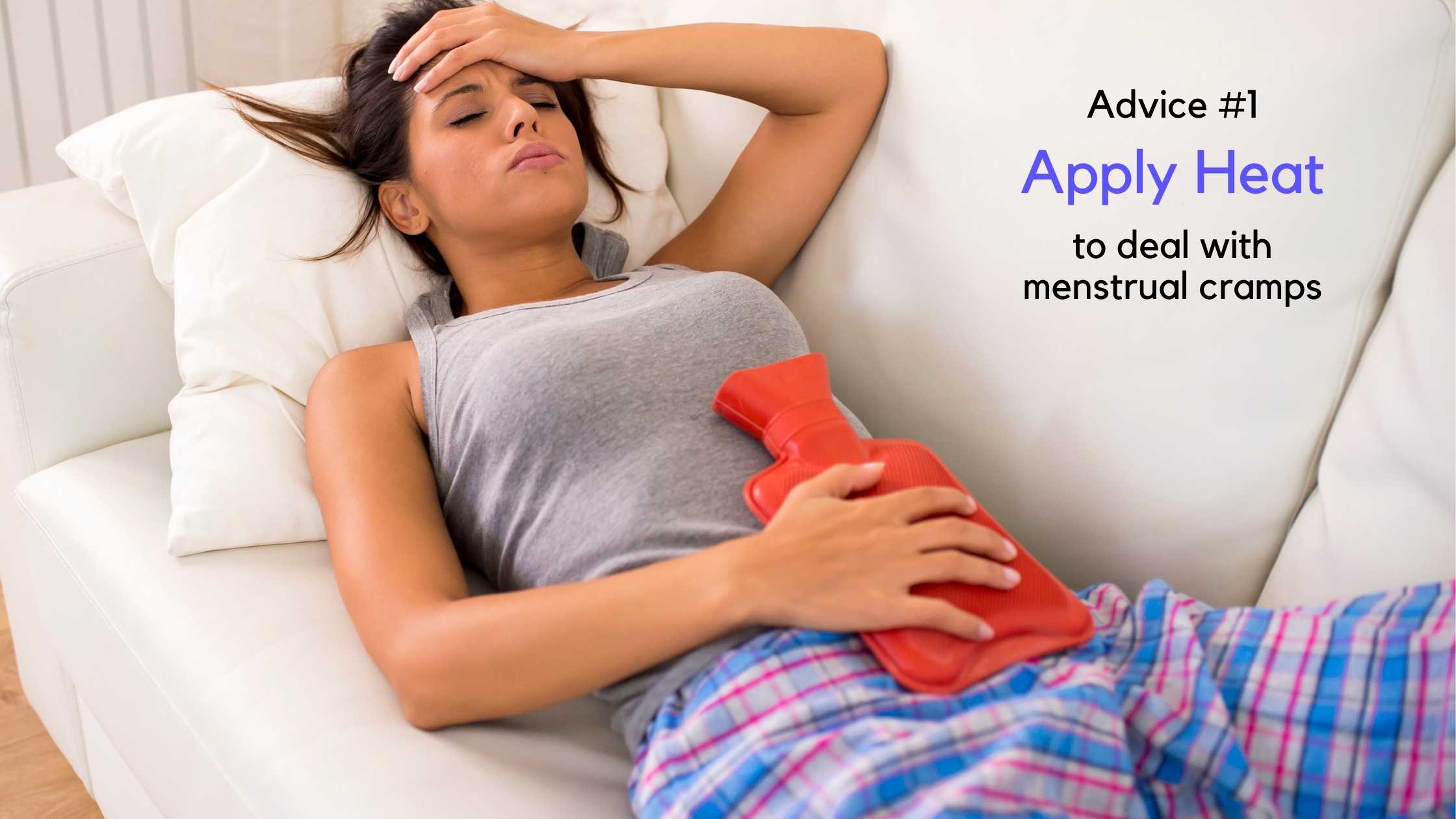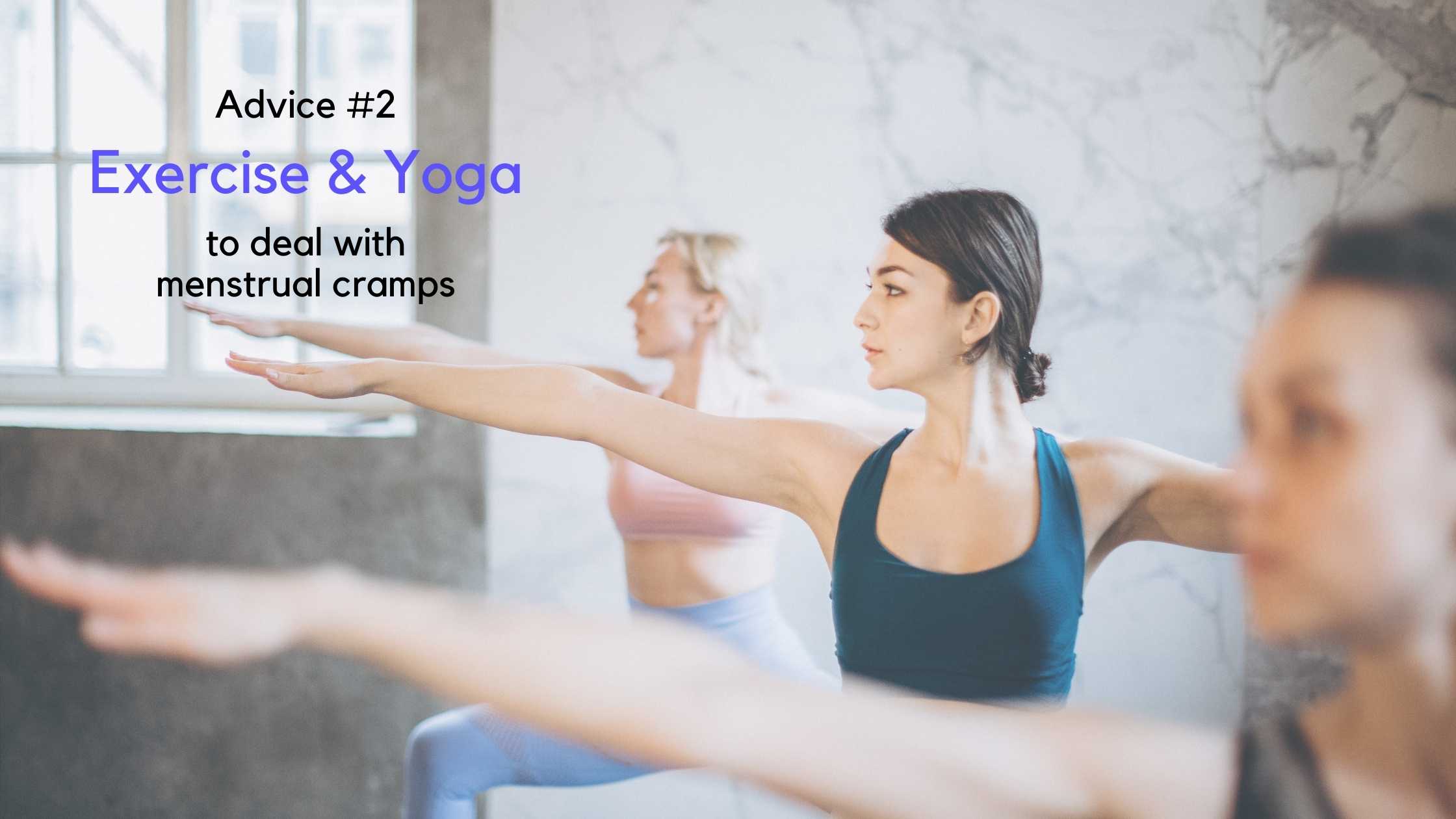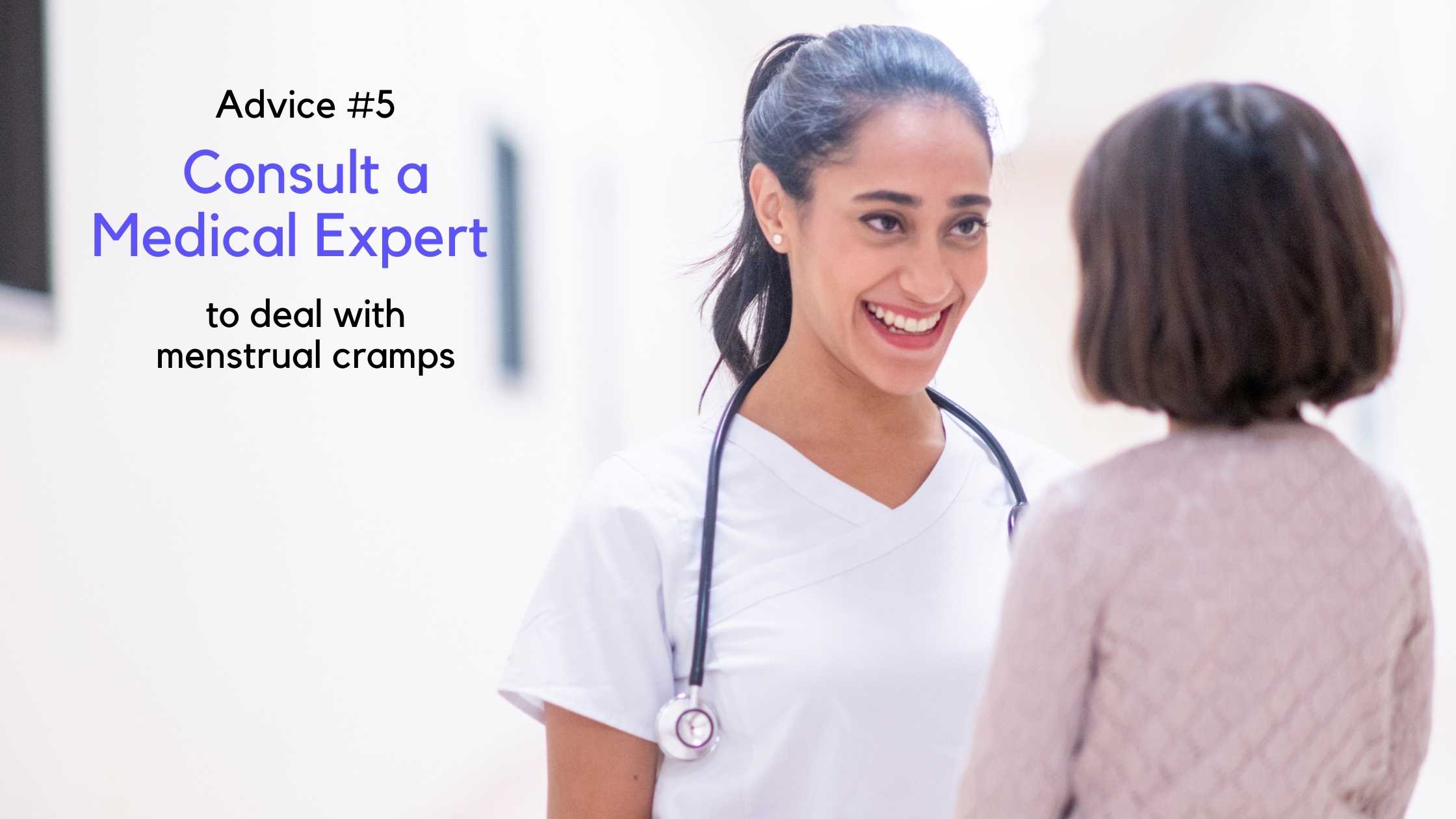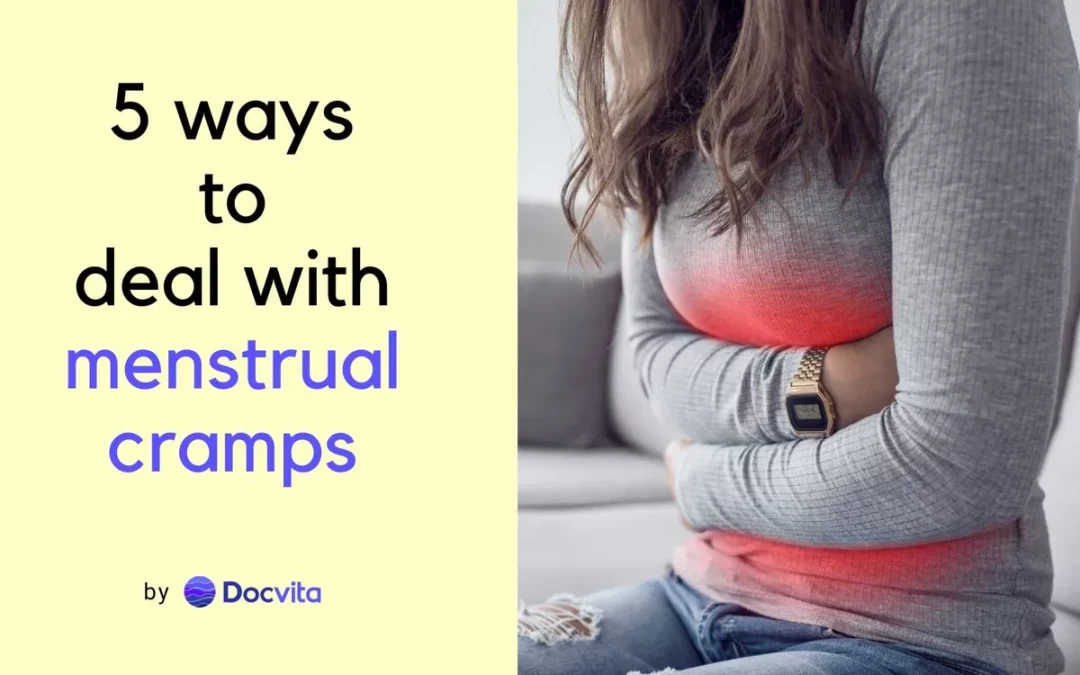Women go through a lot during every menstrual cycle. Almost a week’s pain, bleeding, and hormonal changes cause discomfort in their daily lives, which can be mood swings, cramps, body pain, fatigue, or other premenstrual symptoms. Historically, society has ignored these symptoms and conditions for a long time. Sweeping women’s issues under the carpet are common. And claiming that these pains are only regular and do not deserve any care or attention. However, increased medical research and society’s changing attitude towards discussing period cramps.
Some cultures celebrate a woman for having her first period. However, the celebration is hypocritical. The celebration is for the girl to have reached a fertile age and transitioned into a woman. Educating young girls about their menstrual health is still a rare sight. Even now, society considers discussing menstrual hygiene as crude and disgusting.
Approximately 80% of women suffer from menstrual pain at some stage of life or the other. You can suffer from period pain from your first period up to menopause. Most women experience utmost difficulty during menstruation, especially on the first and second days of their period.
Menstrual cramp is clinically termed Primary Dysmenorrhea, also known as PD. According to a recent study by John Guillebaud, PD can be as painful as a heart attack. Guillebaud is the Professor of reproductive health at University College London. He says he still does not understand why there is a lack of research as patients describe the pain as ‘almost as bad as having a heart attack.’ Menstrual cramps can be debilitating for women to go about their daily routines.
Many companies and organizations are taking steps to recognize women’s discomfort. And are granting women options to leave or work from home due to menstrual pain. But, the taboo around periods still exists, which leads to workplace discrimination. It is also ironic that in most cases, people who govern over the rules and regulations around period leave don’t undergo the experience. Thus, everyone must get proper education for menstrual health. Fundamental menstrual health awareness is necessary for every gender. It opens up healthy conversation and educates people to be more open-minded. Women need to take care of their bodies and realize that it is acceptable and essential to find ways to manage their pain.
Here are some manageable menstrual cramps remedies for you to manage your cramps and pain in periods:

Apply Heat
Applying heat is a simple home remedy for period cramps. It helps your muscles relax, relieves tension, and helps blood circulation. The uterine lining sheds with every period, which can cause tremendous discomfort. Heat compression can help you soothe your pain to a significant degree. Place a heating pad, hot wrap, or water bottle on and around your lower abdomen (or where you feel the most discomfort). Some items, like heat patches, are easy to find in your local drug store or online. Moreover, taking a warm shower or sitting in a warm bath can relieve your pain!

Exercise & Yoga
While exercising might seem like the worst suggestion when you are in pain, exercise can help relieve menstrual cramps. If you suffer from severe premenstrual syndrome, starting some light workouts before your period can help you a great deal. Movement and stretching allow the muscles to ease tension, helping blood flow. Exercise also releases endorphins and other feel-good hormones, uplifting your mood and aiding pain relief. Irrespective of your preferred form of exercise – running, swimming, strength training, or walking, it is safe to participate in all these activities. The type of exercise should depend on your convenience. You mustn’t over-exert yourself.
If you feel tired and your body is under excess stress, try yoga instead! Individual poses are known to be especially beneficial in relieving menstrual pain. Let your trainer, coach, or instructor know that you are experiencing cramps so that they can design a workout tailored to your needs.

Hydrate
Drinking sufficient water and ensuring that your body is well hydrated have multiple benefits for your overall health and can also help you manage period pain. Drinking enough water reduces bloating, which makes symptoms worse. It is also essential to reduce your sodium intake, as it increases water retention and bloating.
Also, try avoiding alcohol which facilitates dehydration. Many people don’t like the taste of plain water. In that case, you can zest up your drink with fruit-infused and flavored water. Drinking hot water is also beneficial, as it promotes blood flow, helping you with painful uterine contraptions.

Diet is Key
For many people, it is common to crave salty, sugary, and carb-heavy foods during their period. And it is only fitting to treat yourself during your periods. Many even consider the seven days of the month a cheat week where they can indulge in all their favorite foods. However, these foods are not your friends. It helps to avoid unhealthy foods, such as trans-fatty acids, and refined foods like sugar, bread, and pasta. Reduce alcohol, tobacco, and caffeine consumption. A balanced diet is necessary if you want to treat yourself.
All of these things increase inflammation and period pain. Instead, include anti-inflammatory and fiber-rich foods. They help reduce bloating and constipation, which can happen with periods. Here’s a list of foods you might consider adding to your guilty pleasures to balance things out:
-
- Berries– cherries, blueberries, blackberries, cranberries, strawberries, and gooseberries are some of the best sources of antioxidants, and they help regulate the menstrual cycle.
- Citrus– including citrus fruits, like lemons and oranges, can help you with period pain and regulate your mood.
- Seasonal fruits– especially hydrating ones, like watermelon or cucumber- can help you stay hydrated and are a better option to substitute when the sugar cravings hit you hard.
- Dark leafy greens- are an excellent source of iron. Experiencing low iron levels is not uncommon during your menstrual cycle. Therefore, it is essential to include natural sources of iron in your diet, such as spinach, kale, broccoli, brussels sprouts, etc., in your daily diet.
- Vegetables- squash, tomatoes, and bell peppers can be an excellent addition to your diet to maintain a healthy hormonal level.
- Fish- fatty fish like salmon or mackerel are rich in vitamin D, iron, protein, and omega-3 fatty acids. It offers an excellent power pack to help your hormonal levels and menstrual pain.
- Legumes and pulses- calcium-rich beans and legumes are an excellent substitute for meat and fish, as they also have an abundance of protein.
- Nuts– like almonds, walnuts, and cashews with seeds like flax-seed and pumpkin are a great addition to your diet as they are a good source of omega-3 fatty acids, protein, and magnesium.
- Dark Chocolate- contains an abundance of magnesium and iron, which are extremely helpful in relieving PD and PMS severity.
- Teas- green tea is a rich source of antioxidants, which helps with menstrual cramps. Besides green tea, herbal teas like raspberry leaf tea, ginger tea, peppermint, and cinnamon tea are also good options to help ease period cramps.
You can also add dietary supplements to make your food more balanced!

Keep Your Mental Health in Check
Your mental well-being has a significant effect on your physical health. And it is not uncommon for even minor stress to affect your menstrual cycle. Studies show that more than half of women suffering from mental ailments have shorter menstrual cycles (less than 24 days), such as anxiety disorder, eating disorder, depression, or bipolar disorder. It can also result in irregular menstrual periods. Substance use disorder can also highly affect menstrual periods by becoming inconsistent.
Therefore, it is essential to keep an eye on your mental health for your physical self to thrive. Suppose you are undergoing treatment for any mental condition and taking medication. Consider consulting your healthcare provider before reaching for any OTC pain medication.
Consult a Medical Expert
It is essential to consult a medical professional before choosing to take any medication. If home remedies and treatments aren’t helpful, you must talk to a doctor who will help you manage your pain. Talk to your physician about your condition. And include how cramps affect your lifestyle and daily functioning. Your medical history gives your doctor the correct information to develop an effective treatment plan.
Menstrual cramps can be excruciating. And not every other person’s pain tolerance or range can ever be the same. The lack of research and awareness also leads to undiagnosed disorders that can be the underlying cause of the pain.
Here’s a list of the most common medical conditions that can cause severe pain:
PMS – Or premenstrual syndrome, is a common condition affecting 90% of the people who menstruate. It usually starts a week before the follicular phase (your period) begins. Which later can carry on into the first few days of menstruation. Researchers speculate that PMS is due to the drop in estrogen and progesterone levels. Common symptoms of PMS are fatigue, irritability, and menstrual cramps.
PMDD – Also known as Premenstrual Dysphoric Disorder, is a form of PMS with a much more severe degree. Approximately 5% of menstruating individuals are affected by PMDD. There isn’t yet a conclusive study to define the exact cause behind PMDD. Still, women struggling with intense stress, depression, or hereditary depression are more prone to this disorder. PMDD and PMS have similar symptoms, but the severity is much more extreme in Premenstrual Dysphoric Disorder.
Fibroids- Or uterine fibroids also have other names, leiomyomas or myomas. It refers to unusual growths that appear in the uterus lining. Fibroids are the abnormal growth of uterine muscle and are pretty common. These growths are benign and not fatal. They are usually minuscule to cause any change in the shape or size of the uterus. It typically occurs in the teen years to the late 20s. It can reduce in size or completely disappear in the later years or during menopause. Fibroids can cause heavy bleeding and painful cramps, affecting the uterine lining. Particular factors like hormonal imbalance, age, and obesity can cause fibroids. However, researchers have yet to discover who is more prone to develop fibroids.
Ovarian cysts- Cysts can sound dangerous, but they are usually harmless. Cysts are sac-like pockets that can form in or on your body. It is generally filled with any fluid or, in some cases, air. As the name suggests, Ovarian cysts develop in the ovaries, generally during ovulation. At least one small cyst is common to grow every month in most women. It naturally disappears without any medication or treatment. However, in some cases, these cysts can grow in size and number, which can cause severe pain and multiple health complications. Medical treatment is necessary to manage cysts in extreme cases. Another reason for Ovarian cysts can be PCOS (polycystic ovary syndrome). PCOS is a disorder where tiny, harmless cysts grow in the ovaries due to hormone imbalance, which causes several complications. Like painful periods, difficulties in conceiving, and insulin resistance. Your healthcare provider might prescribe you medications to treat PCOS and ovarian cysts.
PID – Or Pelvic Inflammatory Disease, refers to the infection in female reproductive organs. The infection usually starts when sexually transmitted bacteria spread from the vagina to the uterus, fallopian tube, and/or ovaries. Typically, PIDs show no symptoms but can cause painful cramps.
Endometriosis- Endometrium is the uterine lining. It grows on the inner walls of the uterus. Which sheds during every period. However, endometriosis causes the endometrium to grow outside the uterus. Typically it can also grow over other reproductive organs like ovaries or fallopian tubes. The uterine lining can shed with every period. Still, the external growth stays entrapped in the body. Which can cause excruciating cramps, heavy bleeding, irritation, and even inflammation.
Adenomyosis- Refers to the condition when the endometrium grows into the uterus’s muscle wall. It is a treatable condition but can cause severe cramps. It is difficult to point out what is the exact cause of Adenomyosis. However, women who are mothers or have undergone uterine surgery are much more prone to develop Adenomyosis.
To Sum It Up:
Women need to start caring for their bodies. It is essential to recognize that it is perfectly acceptable to dedicate some time to themselves, especially during their period. Menstrual cramps are painful and familiar. It is advisable to consult a medical expert if home remedies do not help reduce your menstrual pain. Talk to India’s top doctors from the comfort of your home on DocVita.
